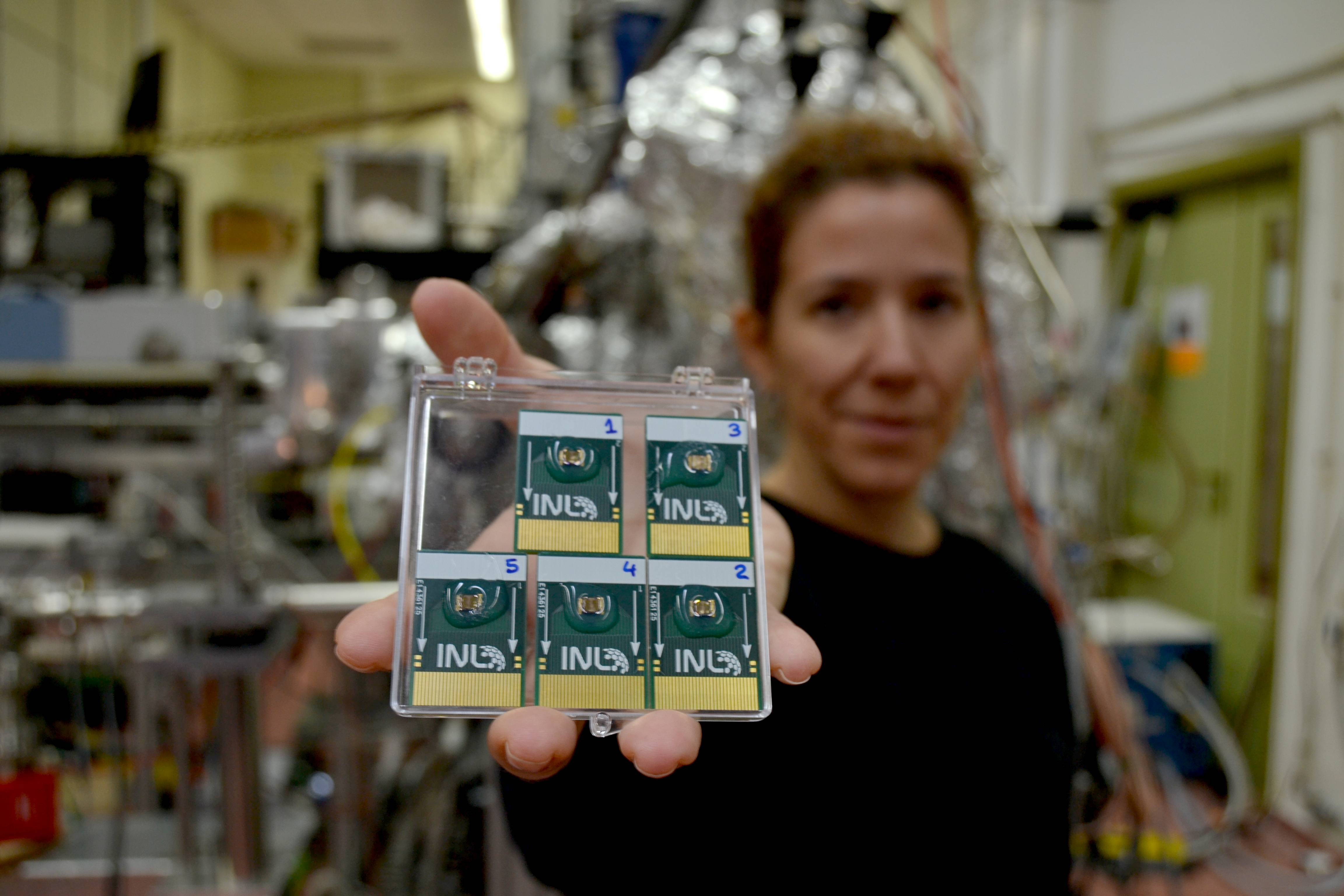A novel graphene-based biosensor enables ultrasensitive detection of the hepatitis C virus
An international team with CSIC researchers has patented the technology, which makes it possible to locate virus proteins and could be used with other pathogens.

Research groups from the Spanish National Research Council (CSIC) and other centers in Portugal, the Czech Republic, and Spain have succeeded in creating and validating a novel biosensor for the ultrasensitive detection of the hepatitis C virus (HCV). The results of this research have just been published in the journal 'Biosensors and Bioelectronics' and the international patent for the invention has already been applied for.
As it is explained by the research groups, which have been led by José Ángel Martín Gago, from the Institute of Materials Science of Madrid (ICMM), CSIC, biosensors based on graphene transistors "have become a promising tool for detecting a wide range of molecules (analytes)".
Until now its performance was not as efficient as needed, but the joint work of these teams has come up with a novel solution: "we use a controlled physical method, based on vacuum technologies, for the covalent functionalization of graphene with a small molecule that it binds to the probe molecule (in this case an aptamer) allowing the detection of the desired analyte. In this way we have managed to build ultrasensitive aptasensors capable of detecting a key HCV protein", explains Irene Palacio, also from ICMM and coordinator of the work.
"The aptasensor has shown to have an extremely high sensitivity for the detection of this protein in human blood plasma, which belongs to genotypes 1 to 4 of the virus, in which 95\% of infections are grouped, continues the researcher. The study results have led to a biosensor that is not only highly sensitive and stable but also provides results in a few minutes, can be reused, and is low-cost.
Carlos Briones, from the Center for Astrobiology (CAB), CSIC-INTA, explains that the detection of this virus is essential: "it is a pathogen of great clinical relevance, as it is the main cause of chronic hepatitis C and one of the most main triggers of liver cancer. Regarding its prevalence, it is estimated that approximately 100 million people in the world live with HCV and about four million new infections occur each year."
In this context, the developed aptasensor "specifically detects the HCV protein called core, which, among other functions, is responsible for forming the virus capsid," Briones points out, noting that, in addition, this recently developed technology "can be extended to different types of pathogens, such as other viruses with RNA or DNA genomes, bacteria, fungi or parasites."
To achieve the device, three complementary lines of research have been developed and combined: molecular biology, nanotechnology, and microelectronics. On the one hand, at the Center for Astrobiology (CSIC-INTA) DNA aptamers with high affinity and specificity against the HCV core protein have been obtained through in vitro evolution and have been functionally characterized.
In parallel, at the Institute of Materials Science of Madrid (CSIC) a protocol for the covalent functionalization of graphene has been developed, characterized by being highly stable and maintaining the unique properties of this material. Finally, at the International Iberian Nanotechnology Laboratory (INL) in Braga (Portugal), biosensor platforms based on graphene SGFET-type transistors have been built. In addition, the study has been complemented by the Institute of Physics (Czech Academy of Sciences) with a theoretical development that explains the detection mechanism of the sensor.
"Our technology takes advantage of these lines of research in a synergistic way, allowing us to develop a field-effect graphene aptasensor device (SGFET)", defends Palacio. "Its main and innovative characteristic is the high stability, reproducibility and sensitivity of the measurement, capable of detecting very low concentrations (in the attomolar range, 10-18 molar) of the HCV core protein", continues the researcher, who agrees with Briones in highlighting the "great applicability" of his invention in the fields of biotechnology and biomedicine. For all these reasons, the authors are open to collaborations with other primary or clinical research groups, as well as with the private sector interested in licensing and exploiting the patent.
-- Ángela R. Bonachera - ICMM Communication Unit --
Instituto de Ciencia de Materiales de Madrid (ICMM)
Sor Juana Ines de la Cruz, 3
Cantoblanco, 28049
Madrid, España
Telephone: (+34) 91 334 90 00
Email: @email
Communication Office: @email

Acknowledge the Severo Ochoa Centres of Excellence program through Grant CEX2024-001445-S/ financiado por MICIU/AEI / 10.13039/501100011033

Contacto | Accesibilidad | Aviso legal | Política de Cookies | Protección de datos